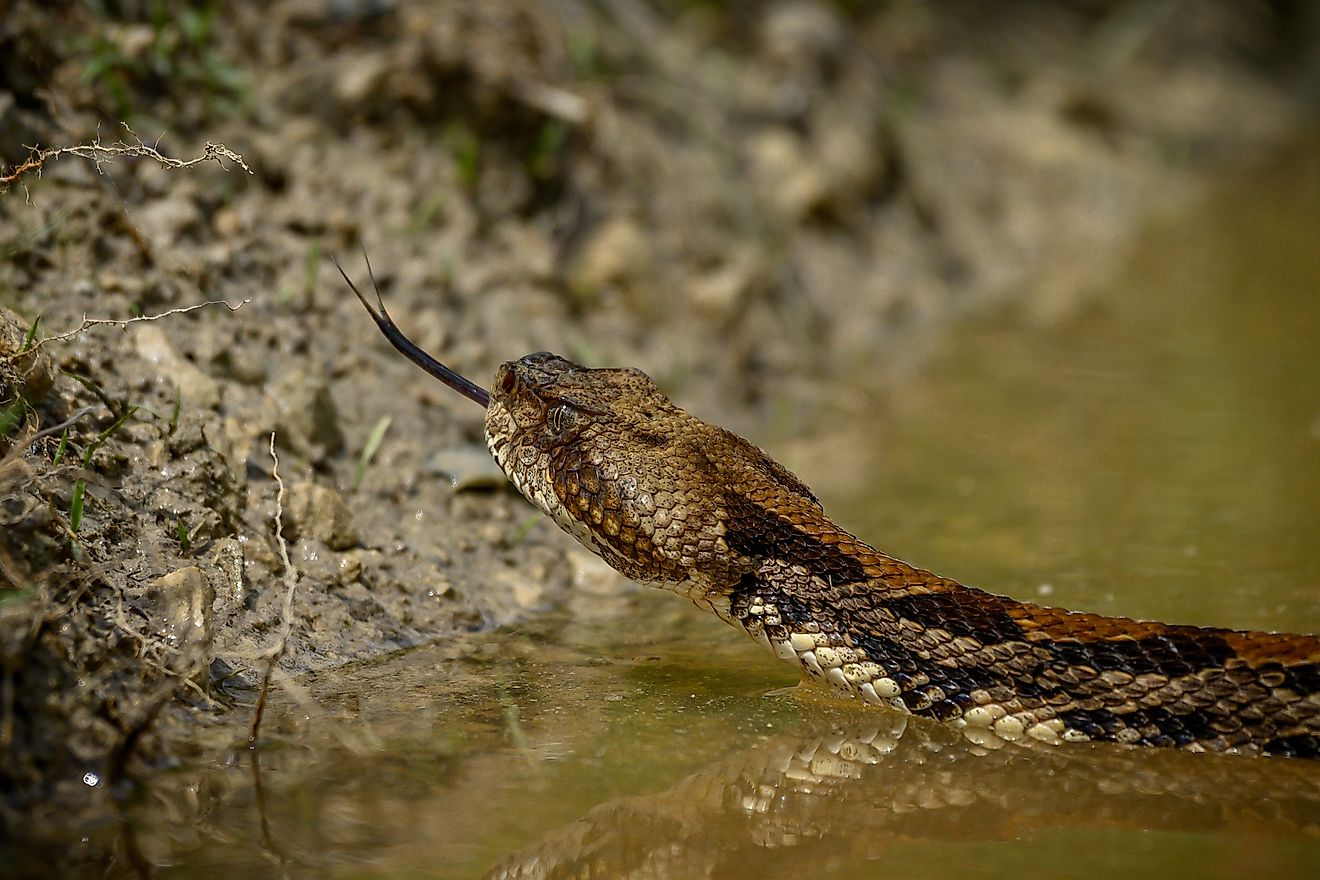
7 Worst Drying Lakes in the World
Bodies of water such as lakes are important parts of the social, ecological, and cultural makeup of nearly every country in the world. Be it for fishing trips on weekends or fourth of July celebrations, lakes all over the globe are revered for their ability to provide habitat, agricultural land, beauty, and leisure. However, with climate change and many other factors becoming a major concern, many lakes around the world are drying up for good! To help you learn about these lakes, we have curated a list of the worst-drying lakes in the world.
Great Salt Lake

Located in Utah, America, the Great Salt Lake is known for its impressive statistic of being the largest saltwater lake in the entire Western Hemisphere. With a maximum length of 120 km and width of 45 km, this lake encompasses nearly 19 cubic km of water making it a massive geographical feature in the region with a major impact on the climate, ecology, and more. This lake is also known as “America’s Dead Sea,” although, unlike the actual “Dead Sea,” it provides a habitat for various species of birds such as Wilson's phalarope, marine animals, and more. While being such an impactful body of water, the reason this lake is on the list of the worst drying lakes in the world is actually due to its lack of outlets!

Just like many other lakes which are drying up, the issue with the Great Salt Lake is that the lack of outlets and the presence of 3 tributaries brings in a large number of minerals which have nowhere to go. With approximately 1.1 million tons of mineral inflow, the continuous evaporation of the lake is reducing water and increasing the overall percentage of minerals and salinity. Due to this, the Great Salt Lake is aptly named as it is very salty and also high in density. While this isn’t enough to be a catastrophic issue, the lake is also quite shallow with an average depth of less than 5m, so, as water evaporates, the lake which has already shrunk by nearly two-thirds, could become too mineral-rich. This would lead to a major loss of habitat, the release of chemicals such as arsenic, and other dangers which make the Great Salt Lake a ticking time bomb for nearby areas.
Aral Sea

Often considered one of the worst environmental disasters, the Aral Sea is actually an entry on this list which is seemingly on the path to recovery. Located between Kazakhastan and Uzbekistan, this lake once used to be the fourth largest in the world with a total area of nearly 70,000 sq. km. Filled with 1,100+ small islands throughout the lake, its name translates to “Sea of Islands” which is a testament to its grandeur at the time. However, even with so much importance and also making up a major chunk of the local fishing industry, Soviet irrigation policies for cotton production in the 1960s began a rapid decline in the lake’s water levels. This project diverted water from the lake to nearby arid plains in an attempt to transform the land into fertile farmland for cotton and other drops.

While the conversion of the desert to farmland was successful it immensely drained the Aral Sea. By the 1990s, this lake which was once responsible for 48,000 tons of fish production per year had dried up completely leaving only a fraction of what it once was. As of now, the Aral Sea itself has completely vanished and in its place, there are four smaller lakes; the North Aral Sea, Barsakelmes Lake, and the eastern and western basins of the South Aral Sea.

Thankfully, after such an environmental loss, the Kazakhastan Government and World Bank recently created an $86 million Syr Darya Control and Northern Aral Sea project which has constructed the Kokoral dam to revive the Aral Sea. While complete revival is nearly impossible, this project is showing promise and has now increased the lake’s volume by approximately 20% and also shown a large improvement in fishing levels. All in all, the Aral Sea truly is one of the worst dried lakes which is thankfully making its way back to prosperity!
Lake Poopó

Once the country’s second-largest lake, Lake Poopó is located in Bolivia and was an impressive sight to see. At its peak, the lake would span almost 70km in length with a total surface area of 3,000 sq. km. which is larger than many countries such as Nauru. Moreover, since 200BC, scientists believe that the lake has been a significant centre for Wankarani culture as well as other civilizations which used the Poopó basin for agriculture and residence. Being so important and immense, it would be hard to believe that such a lake could ever dry out. Sadly, that’s exactly what happened to Lake Poopó. Due to a mix of many factors with both the environment and human interference playing major roles, the lake started shrinking in the mid-late 1900s..

In terms of the environment, Lake Poopó is located within an endorheic basin which means no water is able to flow out. As this traps various minerals, the continuous evaporation creates a lake which is highly saline and also filled with many other materials. While this would be manageable if the lake wasn’t drying up, the issue in Lake Poopó’s case is that the primary inlet, the Desaguadero River does not have enough flow to keep it filled. Alongside this, the gradual melting of the nearby Andes glaciers and the continuous diversion of water for mining and agricultural purposes was the nail in the coffin for Lake Poopó as it completely dried up by the end of 2015. As of today, efforts are being made to revive the lake but with such an immense loss over decades, the majority deem it impossible for the lake to reclaim its former glory.
The Dead Sea

If you don’t already know about the Dead Sea, its name is not meant to scare people off but actually used due to the lack of any macroscopic aquatic organisms within the Lake. Located in Jordan within the Jordan Rift Valley, this lake is one of the world’s saltiest bodies of water with a salinity of more than 30%. This is about 10 times the salinity of the world’s oceans, due to which, this hypersaline lake is not able to provide a suitable habitat to organisms such as fish, aquatic plants, etc. Apart from being immensely salty, this lake is also quite massive with a surface area of 605 sq. km. and a depth of 298 m which gives it the title of the deepest hypersaline lake in the world. However, the alarming thing about the Dead Sea and the reason for it being on this list is that just 90 years ago, it had a much larger surface area of 1,050 sq. km.!

Noticed primarily in the later 1990s, this shrinkage has been linked to the diversion of the lake’s primary tributary, Jordan River. As of now, the lake is shrinking at the rate of 1 metre per year and although this may not be alarming at a glance, it can cause major ecological changes to the surrounding environment. There is, however, one positive factor when it comes to the Dead Sea. As it is so high in salinity, there is bound to come a point wherein evaporation slows down due to there being too much salt/minerals mixed into the water. So, while it may not evaporate completely, we sure do hope the Dead Sea can remain a living and healthy lake for many more years!
Lake Urmia

Similar to some others on this list, Lake Urmia is an endorheic hypersaline lake which basically means it is a very salty lake with no apparent outlets for water to flow out of. Situated in the country of Iran, this lake used to be the largest lake in the entirety of the Middle East and also held the sixth-largest ranking in the world. At that time, the lake had a surface area of over 5,000 sq. km. and was also noted as a site of international importance under the UN Convention on Wetlands. That being said, things turned from wet to dry in 1995 when surrounding factors such as a general drought, reduction in rainfall, excessive farming, and even the building of dams all started a decline in the water levels of Lake Urmia.

Surprisingly rapid and neglected by many local authorities, the loss of water led to the lake losing more than 80% of its former surface area which was an environmental catastrophe for Iran. Notably, while this affected agriculture immensely, it also led to the loss of many habitats for shrimp, deer, sheep, flamingos, and other animals affected by the highly saline water left. As things reached dire conditions, Iran and the UN Development Program joined hands in 2013 and started the Lake Urmia Restoration Program. Luckily, by 2017 the efforts of the program such as a water diversion from the Zab River and natural factors like increased rainfall have begun filling up the lake again with a notable increase in water levels over the past 3 years.
Lake Mead

Lake Mead is one of the smallest lakes on this list but that doesn’t change the fact that it is drying up at a very rapid pace. Located on the Colorado River, Lake Mead is actually a man-made reservoir which was formed by the Hoover Dam. This lake spans an area of 640 sq. km. and is responsible for important water supply routes used for residential and agricultural requirements in the U.S. states of Arizona, Nevada, and California. With such a regular requirement, a loss of water in Lake Mead can be quite catastrophic, however, that is exactly what’s beginning to happen.

As the American West is currently undergoing a serious dry spell, Lake Mead is being hit hard due to increased evaporation and a lack of inflow. According to recent estimates, Lake Mead is expected to drop down to 22% of its peak capacity by the end of 2022, which would mean a loss of 22 trillion litres of water! The issue that is making things worse is that the lifeline of Lake Mead, the Colorado River is under an age-old agreement which was made during much wetter times in American history. Due to this, the allocated water doesn’t actually exist meaning it is up to the involved seven states to quickly re-convene and adjust water allocation to ensure that they aren’t using more water than can be replenished.
Lake Chad

Sharing its name with the internet meme of “Chad,” this lake used to be a large endorheic lake, just like many others on this list. Located in Central Africa, this lake has been of historic importance for many cultures in the region. Spanning all the way back to 5000 BC this lake was notably known by the Romans for being filled with hippopotami and rhinoceros. With such an early origin, Lake Chad was also one of the earliest to start drying up amongst this list with initial signs showing up back in 1963.

That being said, before this time, Lake Chad was truly a pillar for local societies providing water to more than 30 million people in African countries. Even with such significance, the late 1900s saw a massive increase in population and rapid climate change which was too much for this lake to handle. Coupled with the fact that Lake Chad was quite shallow to begin with, the lake managed to hold on until 1998 at which point a meagre 5-10% of the lake was left.











